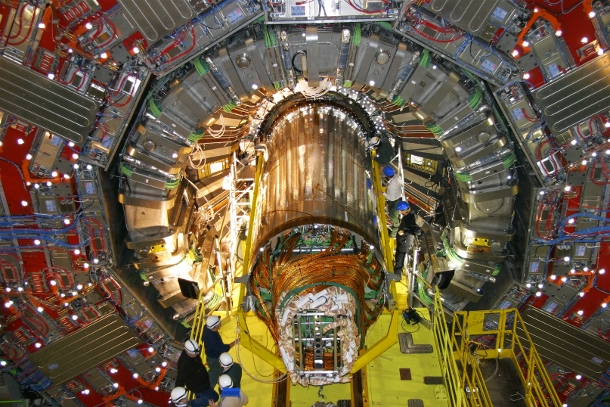How Cern's Big Bang physics lab is going virtual

Research accelerates with virtualisation
When you're recreating conditions just moments after the Big Bang then you need all the computing muscle you can get.
For researchers at the nuclear research lab Cern, home to the world famous Large Hadron Collider (LHC) particle accelerator, that muscle comes in the form of extra processing power using virtualisation.
The lab, which is based on the Swiss-French border, plans to create 60,000 virtual machines on 5,000 servers inside the Cern Computing Centre by the end of next year.
The servers are used to help run particle collision experiments at Cern and to analyse the data they produce.

The CMS detector that senses the debris produced by collisions inside the Large Hadron Collider at Cern
(Image credit: Cern)
The use of virtualisation will help the lab overcome difficulties in splitting the analysis work evenly between machines so that processors are not sat idle.
The work allocated to each physical and virtual machine will be balanced by a software program called Platform ISF from Platform Computing, which is able to prioritise analysis jobs and match them to idle processors, allowing analysis to take place at a faster rate.
Tony Cass, group leader for fabric infrastructure and operations at Cern, said: "It will provide us with extra resources, maybe a 20 per cent increase in the number of CPU cycles over existing hardware - which has a knock on impact on how many analysis jobs can be run.
"Ultimately more analytical work and physics will be able to be carried out in a shorter space of time."
There will be no shortage of information to work on: the collision experiments within the LHC are expected to generate 15 petabytes of data each year.
Analysis jobs are submitted to the Cern Computing Centre from researchers on site and over the LHC Computing Grid, a network that connects the lab to more than 8,000 physicists in 34 countries worldwide.
The LHC is being used to collide protons travelling at 99.9 per cent the speed of light so that detectors can then examine the resulting high energy debris.
Scientists are examining data from the detectors looking for patterns that could reveal the origins of mass, extra dimensions of space or shed light on the nature of dark matter.
Cass likened the analysis being carried out on the data to a person looking at pictures of lots of different ball games and trying to spot similarities and differences.
"For example you could quickly tell there is a difference between rugby and football but the difference between rugby union and rugby league would be very subtle," he said.
The LHC was restarted in November after it was shut down by a technical fault in 2008, just nine days after it was first switched on.